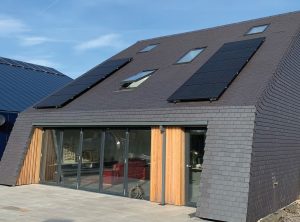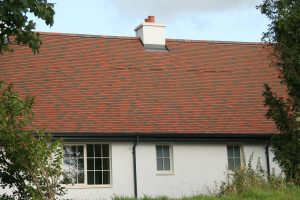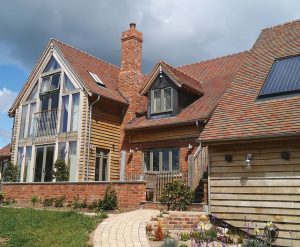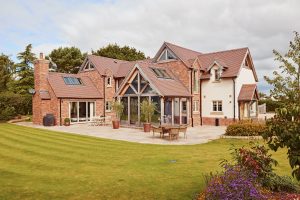Background
Pitched roofing is elegantly simple, which is why it’s survived for several thousand years and, although technically it has evolved considerably, the principles are still fundamentally the same.
Pitched roofs have been part of the built environment for around 5000 years; demonstrating what a sound and effective construction method pitched roofing is. Whilst the earliest forms of pitched roof were laid in simple materials such as leaf, bamboo, turf and stone, the last couple of centuries have seen a shift towards alternative materials with roof tiles formed of clay and concrete. Today, modern manufacturing processes have resulted in the ability to produce precision-engineered roof tiles, which continue to offer versatile, cost effective and visually appealing roofing solutions. Their colour, performance and ease of installation has established clay and concrete roof tiles as preferred choice of roof covering around the world.
Versatility and shape
-
- The simple principles of pitched roofing do not limit artistic expression.
- A huge range of roof shapes and types can be accomplished with a pitched roof.
Structural integrity
-
- Very effective at carrying and distributing not only the weight of the chosen covering, but also the additional loads applied to it by environmental factors such as wind, rainwater and snow. Gravitational forces naturally clear precipitation off a pitched roof.
- Common pitched roof coverings such as clay and concrete roof tiles compliment a pitched roof’s structural performance and provide excellent resistance to challenging environmental conditions such as snow and ice.
A sustainable platform
-
- The pitched roof system is an ideal platform for sustainable technologies such as solar voltaic, solar thermal, or photovoltaic technology. This should be considered by architects when designing roof orientation and pitch.
- A pitched roof can be used effectively to promote the effective collection of rainwater and in many cases can support a rainwater harvesting system.
Rainwater drainage
-
- The pitched roof is exceptionally good at directing water from the roof surface into the guttering and away from the building.
- Maintenance checks are easy since any disturbances in runoff can be seen from the ground.
Reusing rainwater
-
- A pitched roof enables the owner to reuse substantially more rainwater than a flat roof.
Warm in winter, cool in summer
-
- A pitched roof protects a house’s facade from solar radiation in summer, thus avoiding overheating, in winter it lets the sun heat the inside and protects against wind- driven rain.
- A pitched roof significantly improves the thermal efficiency of the building thanks to the natural ventilation present underneath the top roof layer. This ensures maximum home comfort both in winter and summer.
Good ventilation
-
- The ventilated cavity present in a pitched roof helps to evacuate moisture from the roof and prevents condensation from accumulating.
Acoustic insulation
-
- A well-designed and executed pitched roof provides excellent acoustic insulation thanks to its combination of sound-absorbing materials.
Extra space for less
-
- One of the most attractive features of choosing a pitched roof is the extra space it provides, at a relatively low cost.
- The space created by a pitched roof can be used for a range of purposes; most commonly as additional storage.
- There is a growing trend towards people choosing to extend their property, rather than move. Many homeowners view the space underneath a pitched roof as an opportunity to create additional living space affordably.
- In most cases the creation of additional living space, often referred to as a ‘loft conversion’, offers a cheaper alternative to an external extension because the space already exists and therefore the cost lies in converting rather than building from scratch.
Long lifespan, minimum maintenance
-
- A well designed pitched roof, if constructed properly, offers a much longer lifespan than a flat roof, with materials that are more durable and weather resistant. The internal accommodation will be more efficiently insulated and will not suffer from the extremes of temperature that tend to afflict rooms under flat roofs.
Perfectly practical
-
- The structural design of a pitched roof brings with it many practical advantages that will help to keep damage and costs down. Unlike a flat roof, with a pitched roof, there is no place for stagnant water to collect and seep through the building’s walls. Similarly, any waterproof insulation in a pitched roof is not vulnerable to damage caused by stagnant water, moisture or vegetation.
Summary
There are significant advantages to specifying a pitched roof building design, delivering a range of social, economic and environmental benefits to both the homeowner and the developer.
Build for the future; build with a pitched roof.




